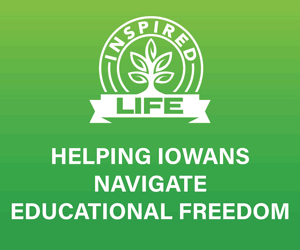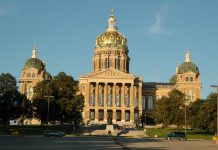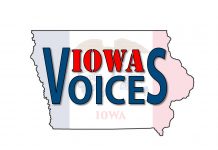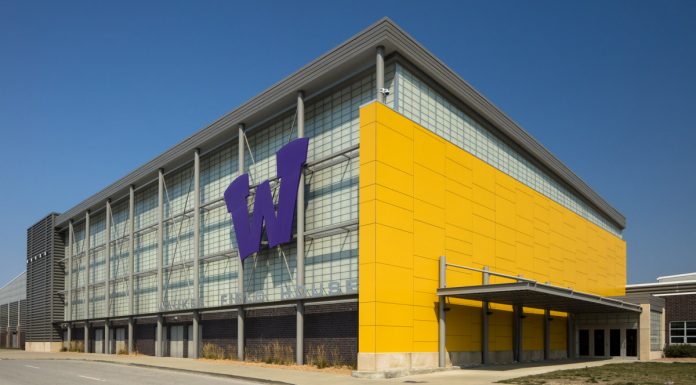The NFIB Research Center released the following data today on the small business loan programs:
The severity of economic disruptions in the small business sector is quickly increasing the immediate demand for financial assistance among small business owners. NFIB’s Small Business Economic Trends survey highlighted the rapid decline in the small business sector with the largest monthly decline in small business optimism in the survey’s history. The economic impact of the COVID-19 outbreak and associated policy responses has negatively impacted 90% of small business owners.
The NFIB Research Center’s latest survey focused on the two main COVID-19 related small business loan programs. The survey highlights the strong demand for financial assistance among small business owners and how owners are navigating the initial rollout of the two loan programs. The two loan programs are the Paycheck Protection Program (PPP) created by the Coronavirus Aid, Relief, and Economic Security (CARES) Act and the Economic Injury Disaster Loan (EIDL) that was expanded and funded through the Coronavirus Preparedness and Response Supplemental Appropriations Act. Both loan programs offer generous eligibility to help support most small business owners. However, the programs have yet to deliver the loans, frustrating small business owners who are in immediate need of financial support.
In McCallsburg, Kevin Jacobson is using the money he received from the Personal Paycheck Protection Program to keep paying his employees. Jacobson’s small business, Central Iowa Televising, sends cameras down sewer systems to determine where and how much damage there is – and strategizes a way to fix it.
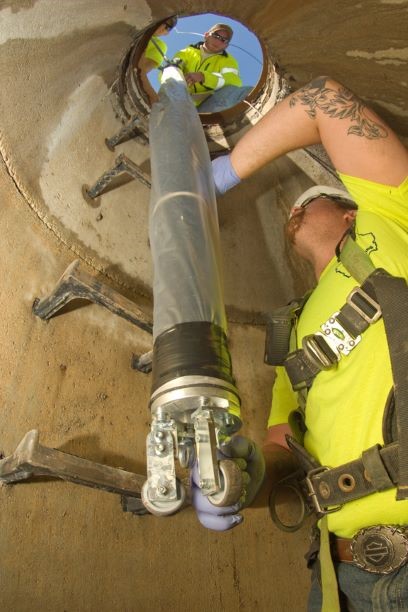
One of Jacobson’s employees shows off the televising system they use to analyze damage to sewer systems.
While Jacobson has still been able to work, two of his employees have been out sick for the past three weeks. He can not only use some of the money he secured through the PPP loan program to pay them for their sick leave – but ensure the rest of his employees can get a paycheck considering the uncertainty of the coming weeks as the coronavirus continues to impact Iowa.
“This money puts my mind at ease. I don’t have to worry about my employees anymore. This is all about cash flow. I haven’t been paid for jobs my small business completed two months ago because of the coronavirus and clients unable to get to work and cut me a check. Now I know that no matter what happens over the next eight weeks, I can take care of my employees. They can pay their bills, buy groceries and take care of their families. This money is enough to get me through the uncertainty,” said Jacobson.
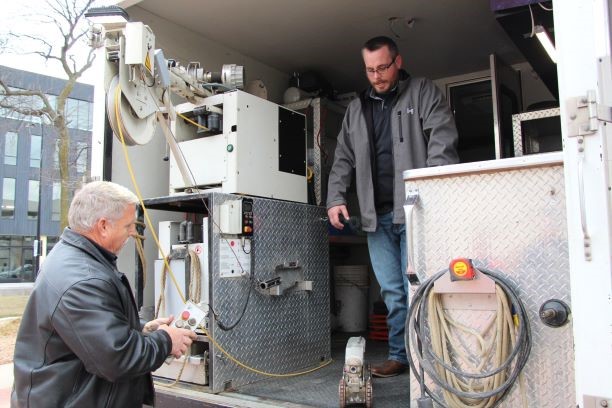
Kevin and his son Shane show off the televising equipment they use to put robots into the sewer system and project and analyze damage to sewer systems.
“Small Businesses were promised by Congress and the Small Business Administration that the money to keep their businesses operational would flow within a timely manner. So far, that has not proven to be true. Kevin Jacobson is the exception, not the rule,” said NFIB State Director in Iowa, Matt Everson. “For our cash strapped small businesses who have been forced to close or dramatically reduce production, time is running out. On behalf of our small business owners in Iowa, NFIB urges the federal government to release the funds to more small business owners.”
The new PPP loan program gained strong interest among small business owners and has been widely advertised in the news, by the Administration, and advocacy groups including NFIB. The vast majority (93%) of small business owners are familiar with the program. About 70% of small business owners tried to apply for the loan with varying degrees of success. Of the 30% who have not actively tried to apply, one-third of them plan to in the next month and 36% are considering it.
About 72% of those who tried to apply for a PPP loan were successful in submitting their application. However, some banks are pre-screening applicants before having them fill out the full application, so it is unclear how many have successfully applied or have just completed the first step in a longer process. Twenty-eight percent of small business owners were not successful in applying for a PPP loan.
The vast majority of small business owners (84%) who successfully submitted their application have a checking or savings account with the bank. Just under half of successful applicants have an active loan with the bank and another 24% have a business credit card associated with the bank. Only 1% of successful applicants applied at a bank with which they had no previous association. Most banks that are participating in the program and facilitating these loans are only taking applicants from current customers.
Of the 28% of small business owners who were not successful, most of them (68%) are waiting for their bank to start accepting PPP loans. Nine percent of them are not able to find a participating bank, which is likely due to their own bank not participating. Five percent of owners trying to apply for the loan were told by their bank that it had hit their limit of accepting loans. This issue may have been eliminated on April 8, 2020, with the regulators allowing Wells Fargo to exceed their previously placed cap on loan origination. Another 5% found the process too complicated to proceed.
The survey also asked about participation in the SBA’s Economic Injury Disaster Loan (EIDL) program. The EIDL program is slightly less known among small business owners than the PPP loan program with three-fourths of them familiar with the EIDL. About half of small business owners have applied for an EIDL loan, 45% have not, and another 5% tried but the SBA website was not working at the time.
Almost all those who applied for the EIDL loan requested the emergency EIDL grant of up to $10,000. The design of the emergency grant was to provide immediate financial assistance as the full loan was being processed.
Of those who applied for the EIDL loan, just 4% have been approved and 1% not approved. Most applicants of the EIDL have yet to receive an update on the statues of their application and no small business applicants have received the loan or the emergency grant.
About three-quarters of small business owners found the EIDL application process generally easy, but they are growing increasingly frustrated with the processing of these loans and a lack of communication about when they can expect to receive money if their loan is approved. Ten percent of applicants found it difficult submitting the application online due to technology issues related to the SBA website and another 8% had problems filling out the application.
Both the EIDL and PPP loans are of great interest to small business owners with large numbers of them applying for one or the other and often both. The financial need is immediate and small business owners are now in a holding pattern, waiting for their loan as economic conditions worsen for many.
Methodology
This survey was conducted with a random sample of NFIB’s membership database of about 300,000 small business owners. The survey was conducted by email on April 6-7, 2020. NFIB collected 884 usable responses.



